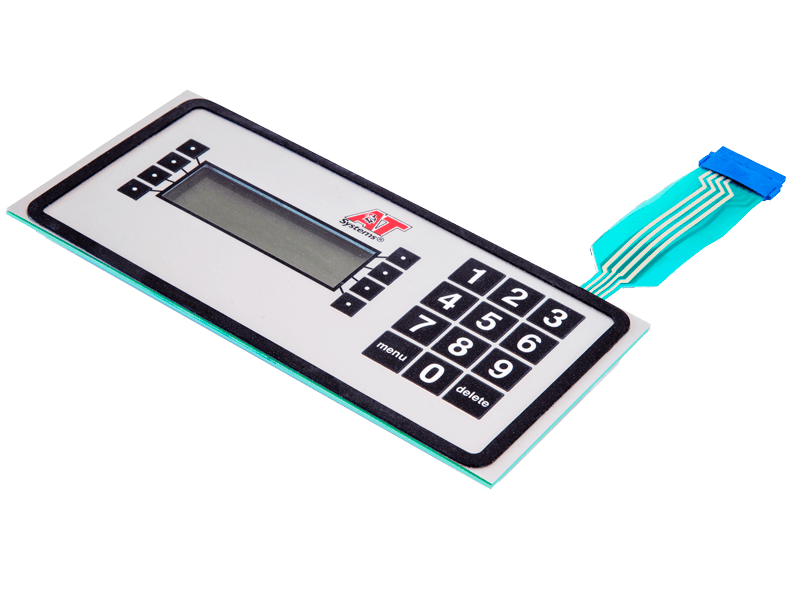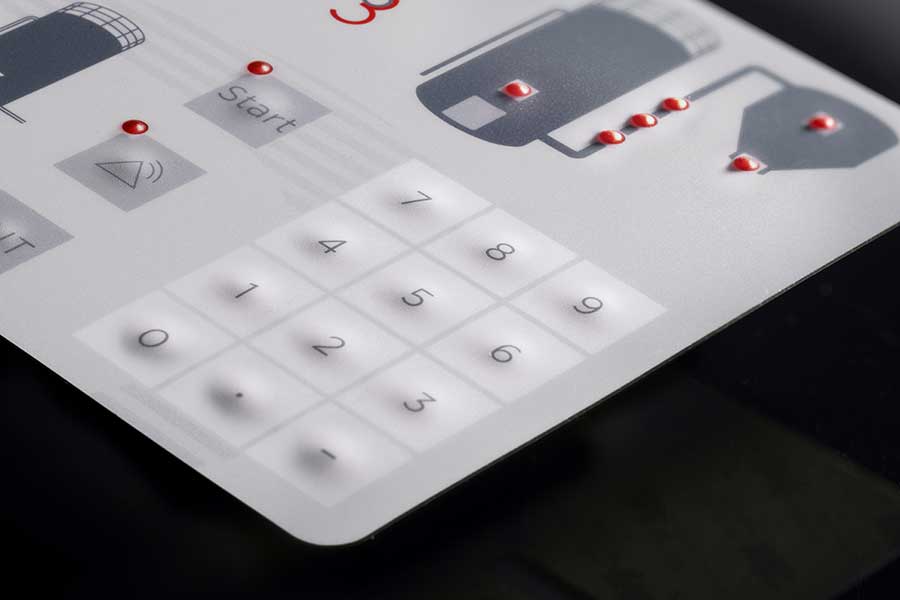Everything About Membrane Switch: Recognizing Its Style and Functionality
When you consider the control interfaces in contemporary gadgets, membrane layer switches often come to mind. These elements are greater than just buttons; they mix layout and functionality effortlessly. Recognizing exactly how they work and what makes them effective can alter your viewpoint on day-to-day electronics. There are subtleties to their layout and efficiency that you might not be conscious of. Let's explore what sets membrane switches over in addition to various other control systems.
What Are Membrane Layer Switches?

Membrane layer buttons can also be personalized concerning form, size, and graphics, allowing makers to develop one-of-a-kind user interfaces customized to details items. Overall, membrane switches play a substantial role in improving customer experience throughout a large range of applications.
How Membrane Switches Over Job
When you press a secret on a membrane button, it triggers an uncomplicated yet reliable mechanism. The leading layer, typically constructed from versatile product, lowers onto a conductive layer beneath it. This action bridges the gap in between conductive traces, completing an electrical circuit. As quickly as the circuit shuts, it sends a signal to the gadget's controller, which translates your input.
You'll observe that the tactile comments differs based on the switch layout, using either a soft click or an extra noticable action. Once you launch the key, the membrane layer go back to its initial position, resuming the circuit and quiting the signal. This procedure occurs nearly immediately, ensuring a responsive user experience.
Membrane layer buttons are popular as a result of their toughness and resistance to dust and dampness, making them perfect for various applications, from house home appliances to medical gadgets. Comprehending this operation aids you value their prevalent use.
Secret Elements of Membrane Switches
Comprehending the vital elements of membrane buttons is basic for understanding their performance and layout. The protective layer guards versus ecological variables and use, extending the switch's life-span. By recognizing these elements, you'll get insight right into exactly how membrane layer switches over run and their importance in various applications.
Materials Made Use Of in Membrane Layer Switch Over Design
The performance and toughness of membrane layer switches greatly depend on the materials made use of in their design. You usually run into polyester and polycarbonate as key substrates due to their superb strength and adaptability. These products resist scrapes and chemicals, making them optimal for demanding settings.
The conductive layers typically utilize silver or carbon, chosen for their dependability and conductivity. membrane switch manufacturer. Silver offers remarkable performance, while carbon is a cost-efficient choice. For the overlay, you might think about a matte or shiny finish, depending on your aesthetic needs and individual experience
Make certain to choose adhesives that endure environmental aspects like temperature and moisture. Picking the best materials will assure your membrane switch stands the test of time.
Design Factors To Consider for Membrane Layer Switches
While making membrane layer buttons, it's vital to take into account various elements that affect their functionality and user experience. Begin by focusing on the design and switch size; make particular they're user-friendly and very easy to browse.
Validate your design accommodates environmental aspects, like moisture or temperature variants, which might impact efficiency. By meticulously taking into consideration these aspects, you'll produce a membrane layer button that enhances functionality and contentment.
Applications of Membrane Layer Switches
Membrane layer switches are functional components discovered in different applications, from industrial tools to consumer electronic devices. You'll see their influence in equipments that need resilient user interfaces and in devices that gain from smooth styles. Recognizing these applications aids you appreciate the performance and usefulness of membrane layer switches in day-to-day modern technology.
Industrial Devices Usage
When you're looking to boost the performance of commercial devices, membrane layer buttons provide a reliable remedy that combines toughness with straightforward design. These switches are perfect for severe settings, offering resistance to dust, Our site dampness, and chemicals. Embrace membrane buttons to simplify your procedures and improve general performance.
Customer Electronic Devices Combination
In the domain name of consumer electronic devices, membrane switches pop over to this site play a vital role in enhancing customer communication and gadget performance. Membrane layer switches also guarantee durability and resistance to dust and dampness, extending the life expectancy of your electronic devices. By picking membrane buttons, you enhance not just the functionality but also the design of your devices, making day-to-day communications smooth and pleasurable.
Benefits and Drawbacks of Membrane Buttons
While membrane layer buttons offer a range of benefits, they also come with some disadvantages that you ought to take into consideration. One significant advantage is their portable style, making them perfect for space-constrained applications.

Nevertheless, there are drawbacks. Membrane buttons can have a much shorter life expectancy contrasted to mechanical switches, especially under hefty usage. They can likewise be less responsive, which could impact user comments throughout operation. If harmed, repairing them can be challenging and commonly requires total substitute. Eventually, their sensitivity to severe temperatures and environmental conditions may restrict their efficiency in certain setups. Balancing these benefits and drawbacks will certainly help you determine if membrane buttons are the best fit for your task.
Regularly Asked Concerns
For How Long Do Membrane Changes Normally Last?
Membrane layer switches over typically last in between 5 to ten years, depending on use and ecological conditions. You'll wish to examine factors like wear, exposure to moisture, and temperature level changes to gauge their long life properly.
Can Membrane Changes Be Customized for Specific Layouts?
Yes, you can personalize membrane buttons to fit specific designs (membrane switch manufacturer). You'll have the liberty to choose shades, forms, and formats that match your task's requirements, ensuring they mix seamlessly with your general visual
What Is the Expense Variety for Membrane Layer Change Production?
The price array for membrane button production normally drops between $1 and $10 each, relying on factors like style complexity, quantity, and products. You can obtain quotes from producers to find the finest choice.

Are Membrane Switches Water Resistant or Immune?
Membrane buttons can be created to be water resistant or immune, relying on materials made use of and building and construction approaches. If you require them for damp settings, guarantee see you specify those needs during the style process.
How Do Membrane Changes Contrast to Standard Buttons?
Membrane layer buttons are typically thinner and more flexible than conventional switches, providing a sleek design. They're often much easier to clean up and integrate, yet may not provide the responsive responses you're used to with mechanical options.
Conclusion
